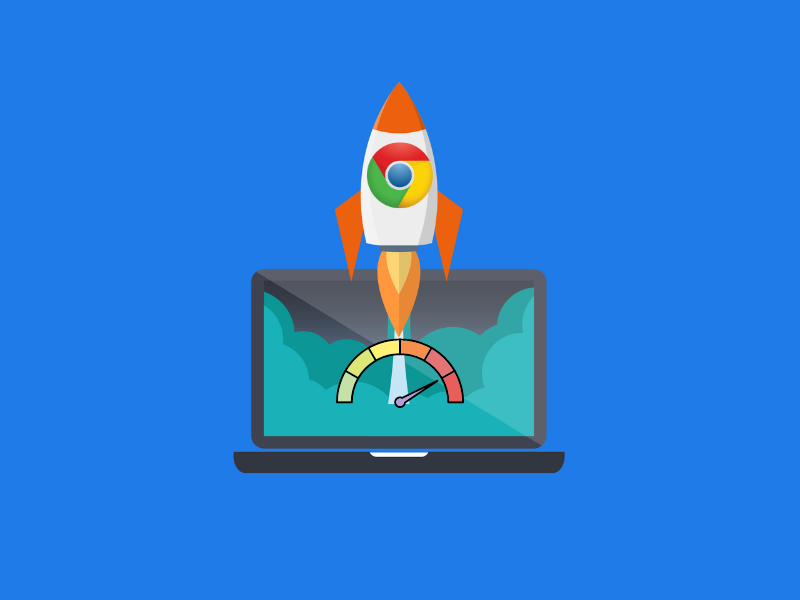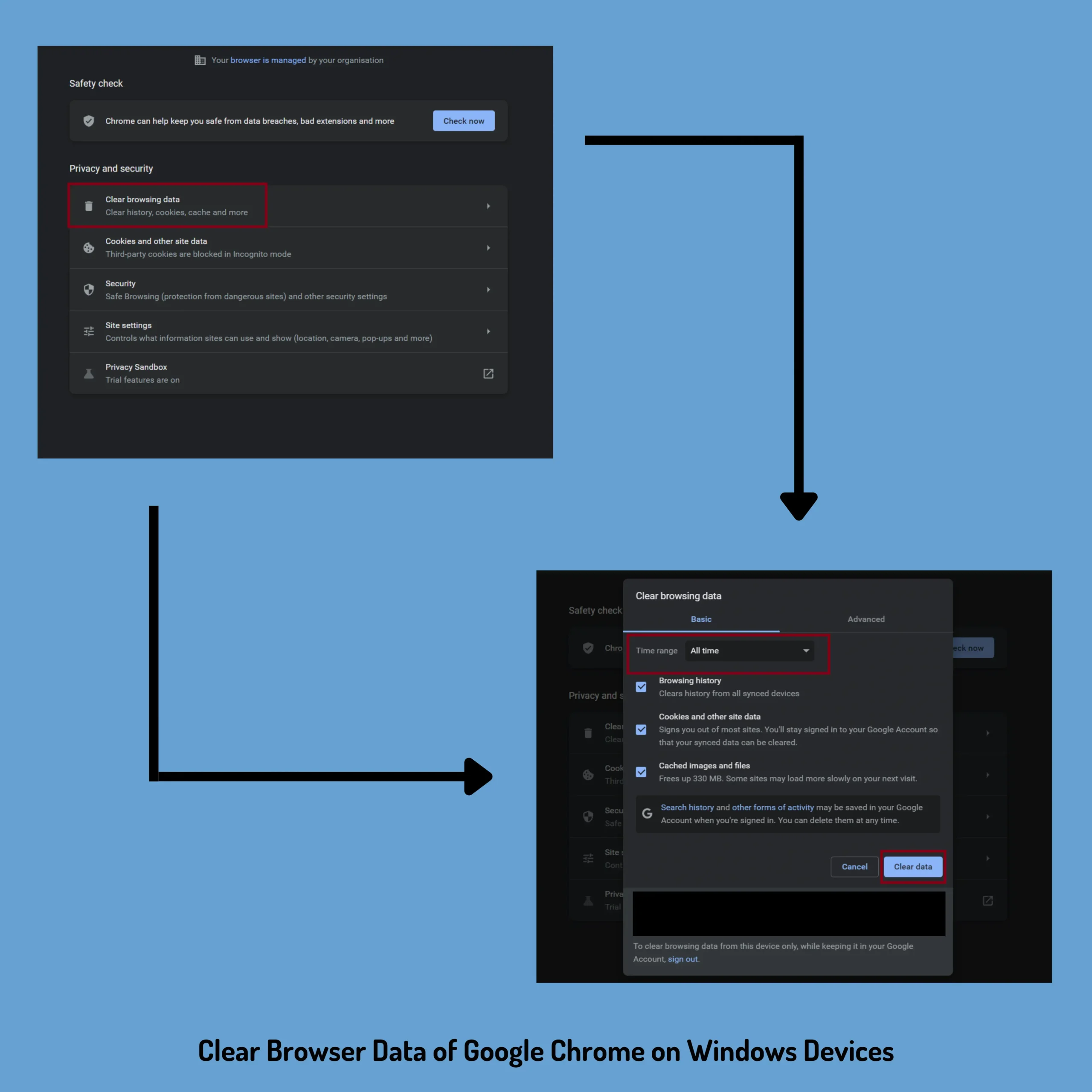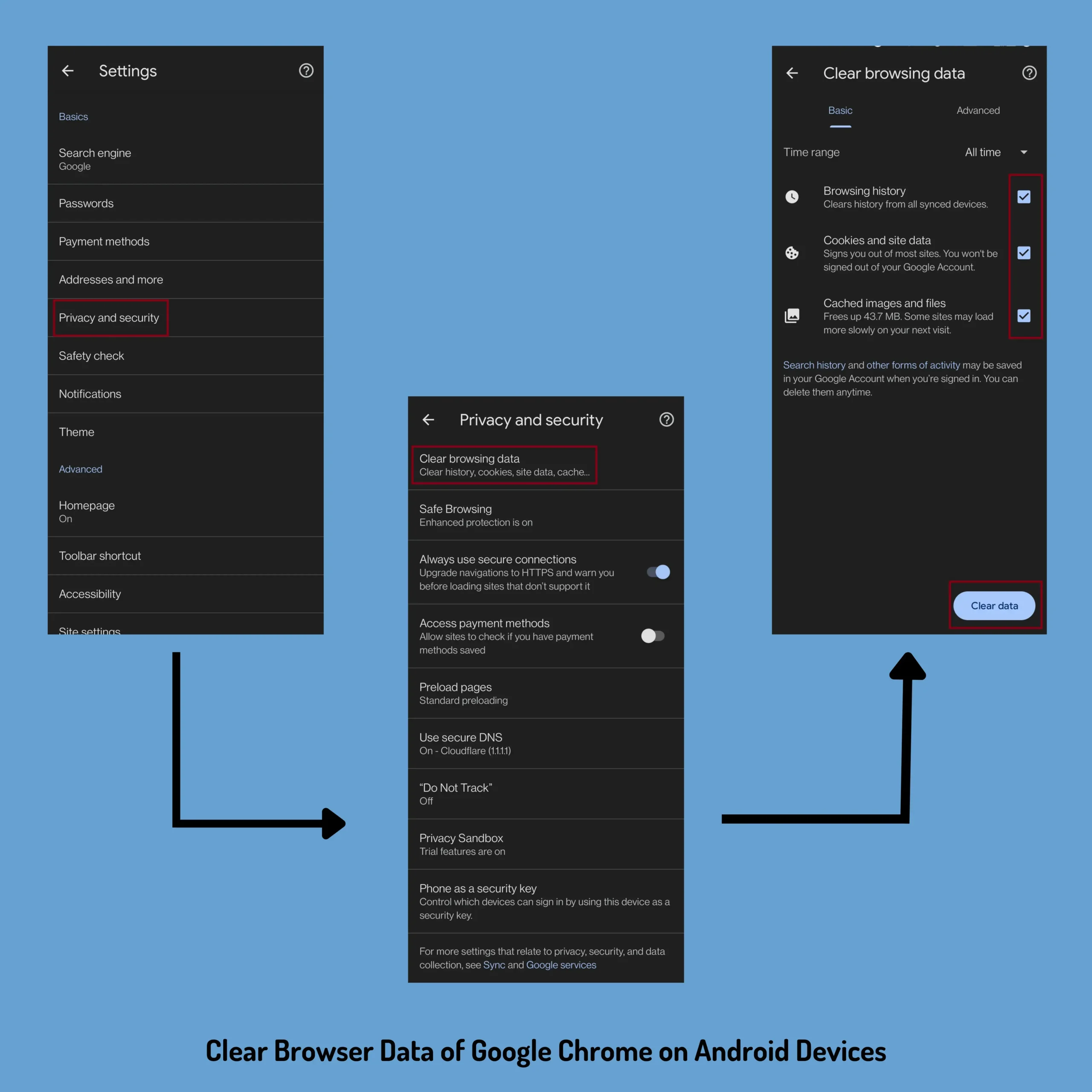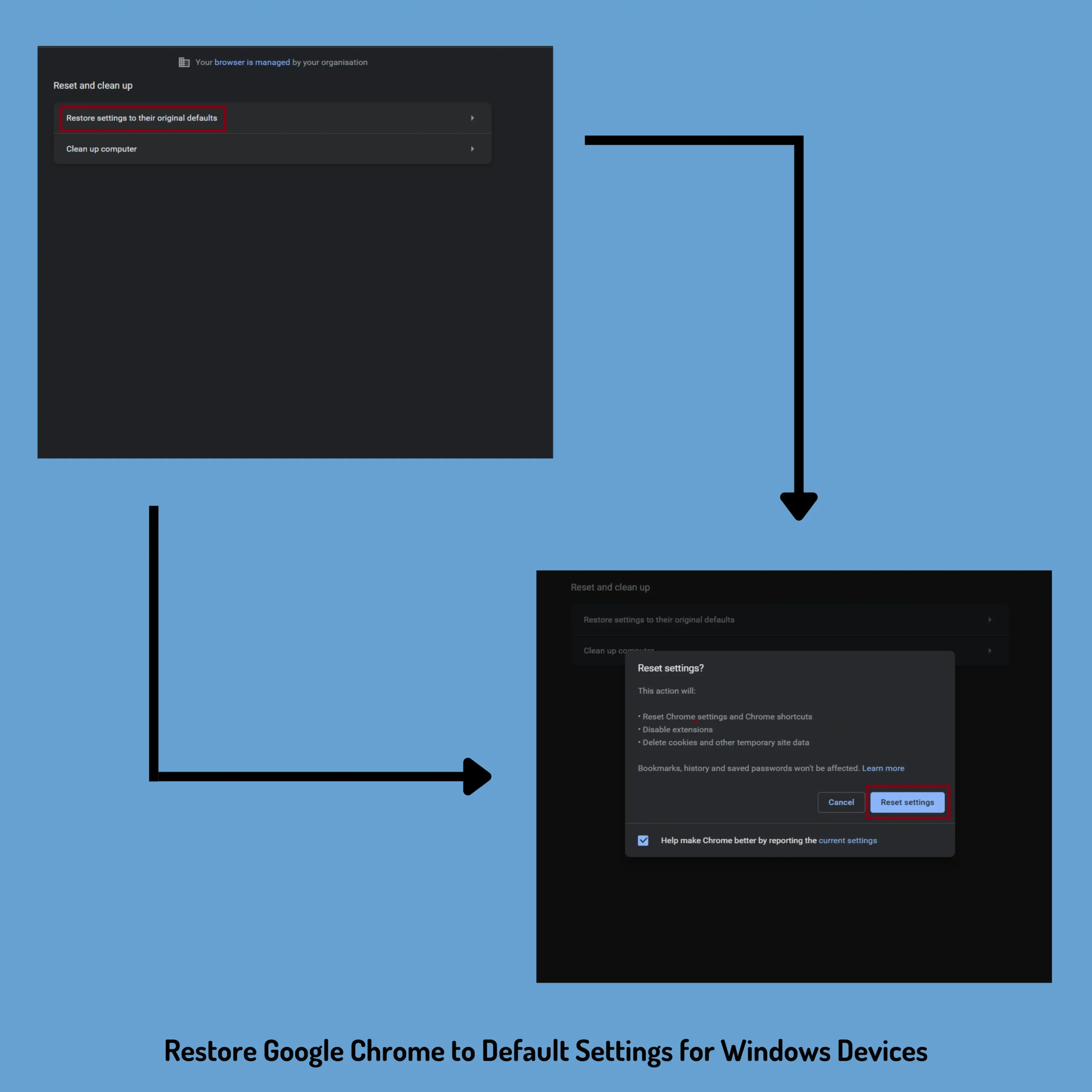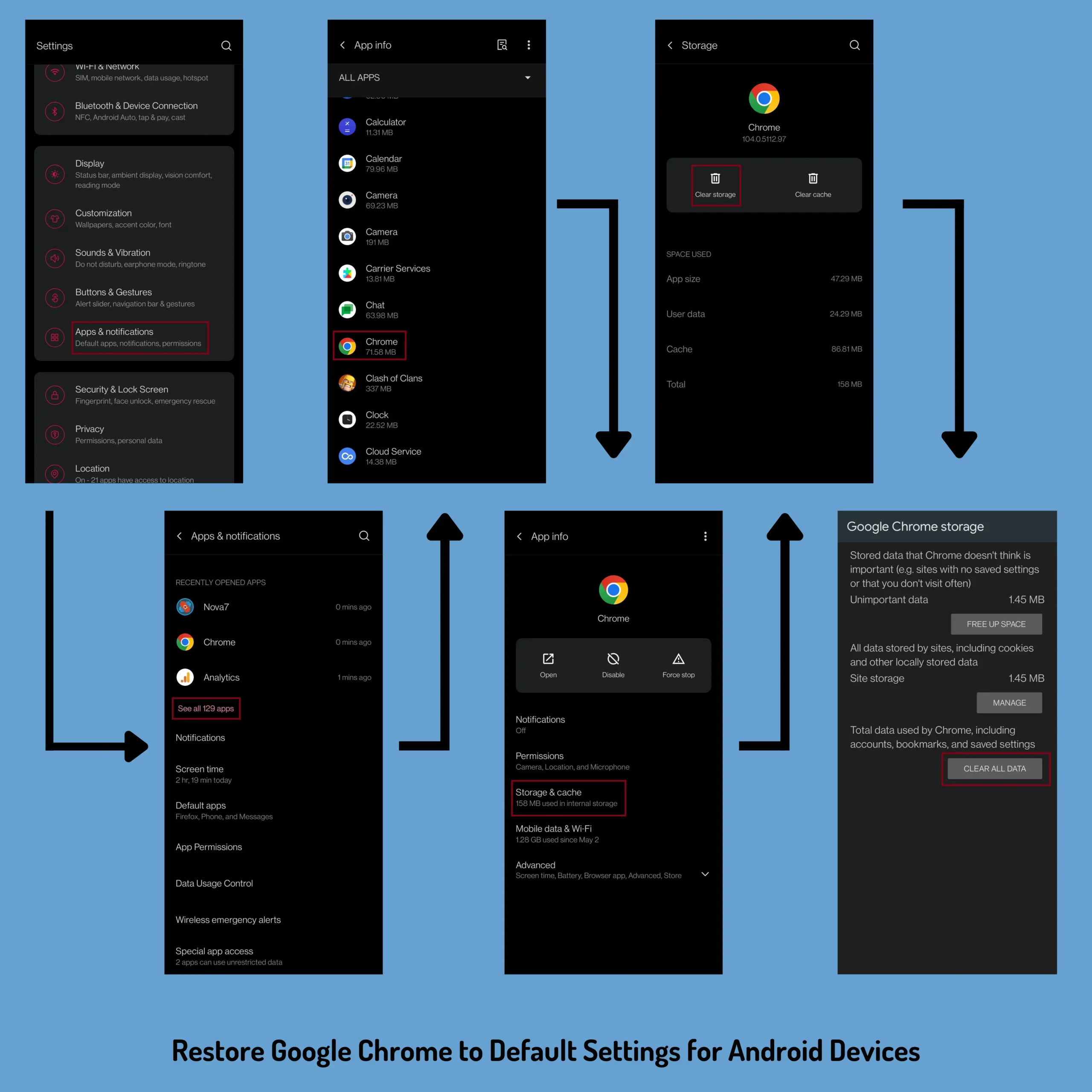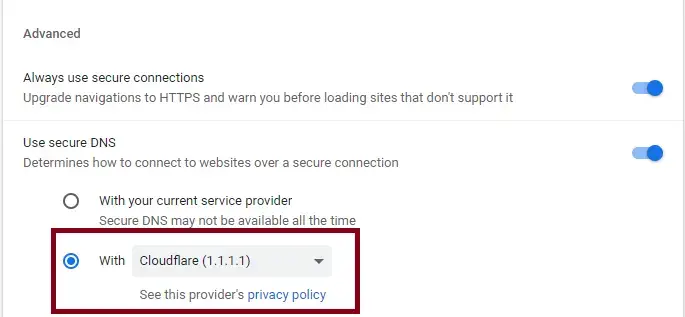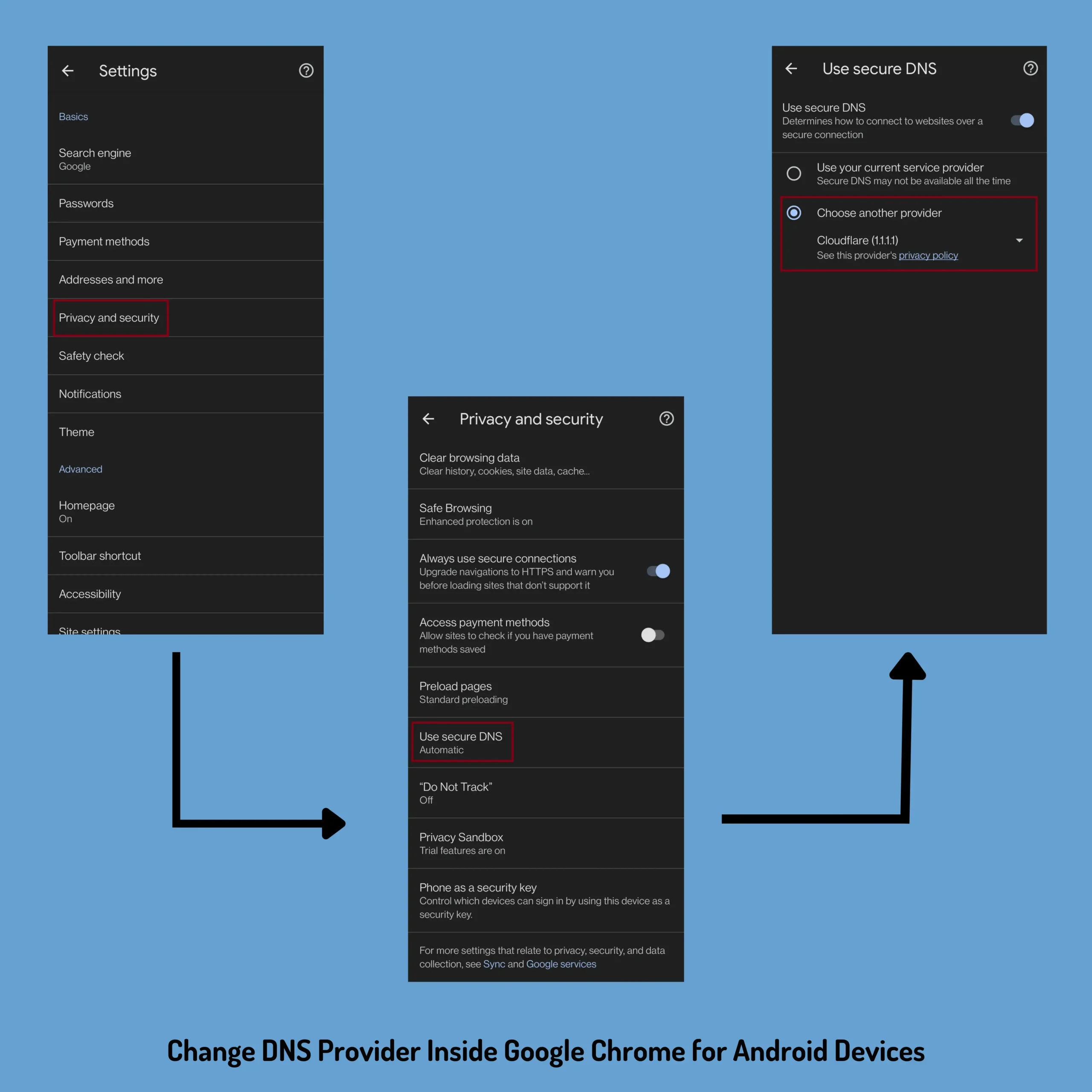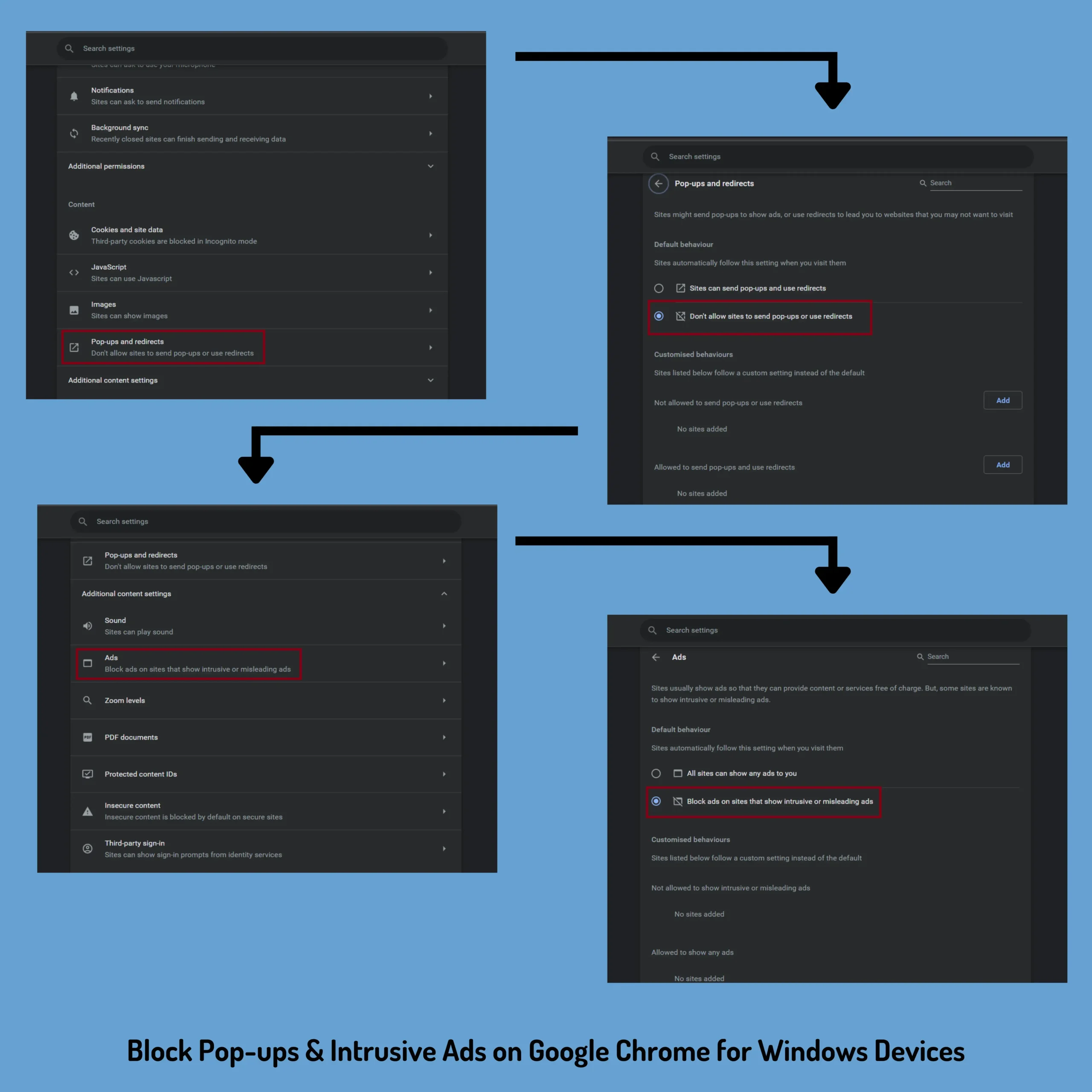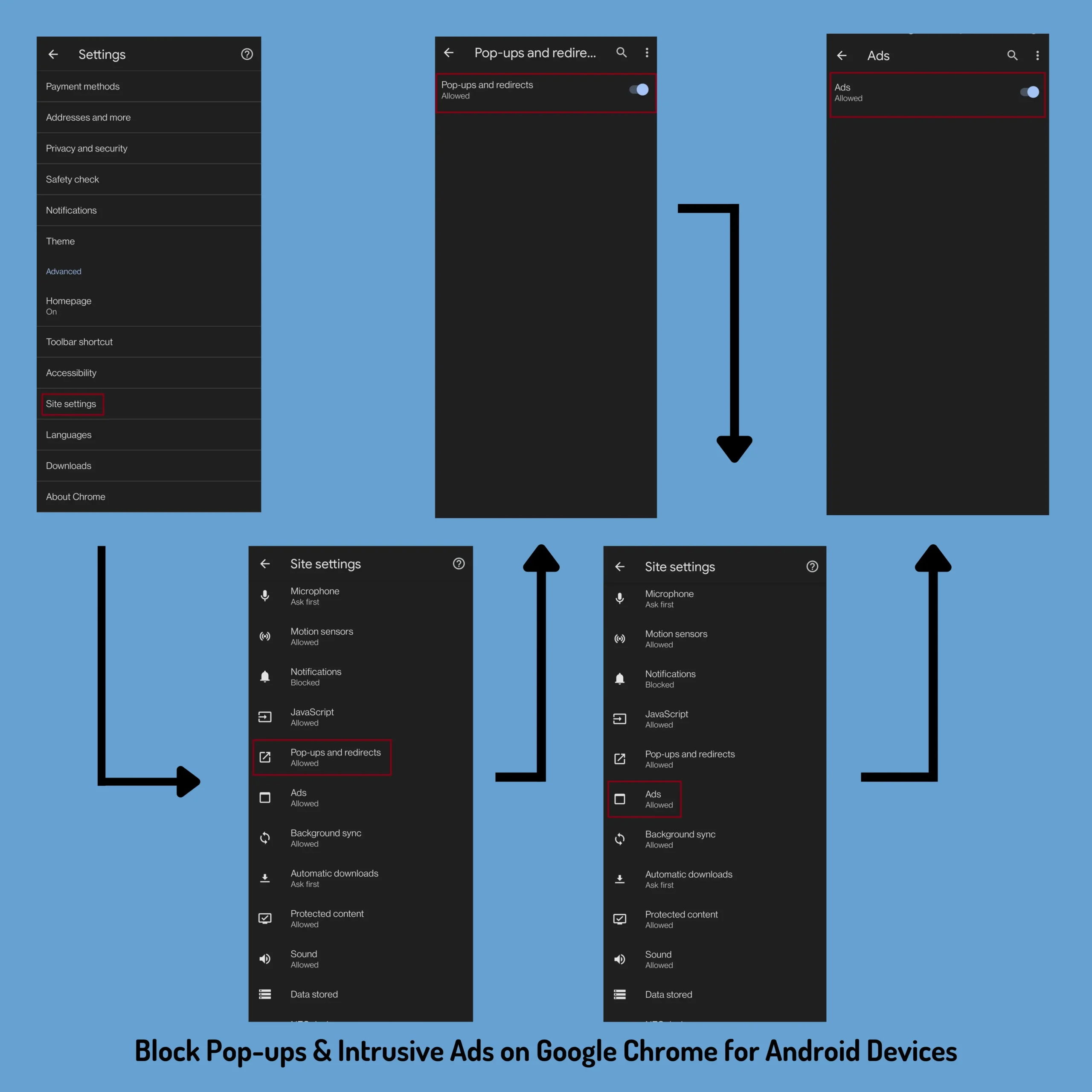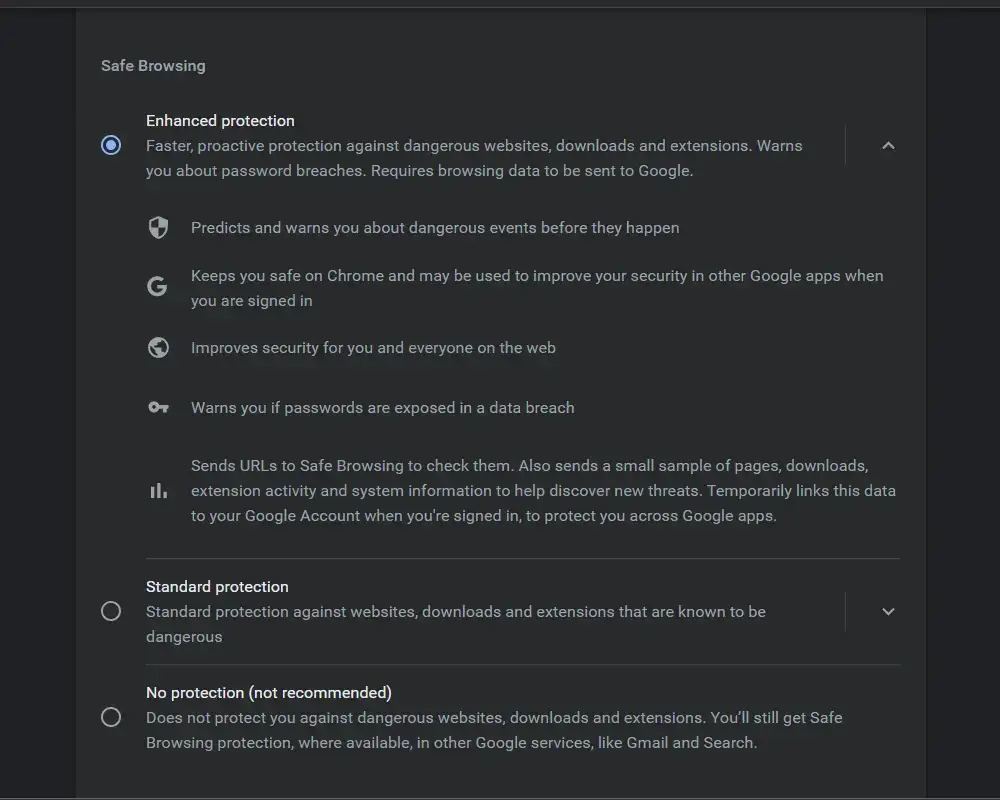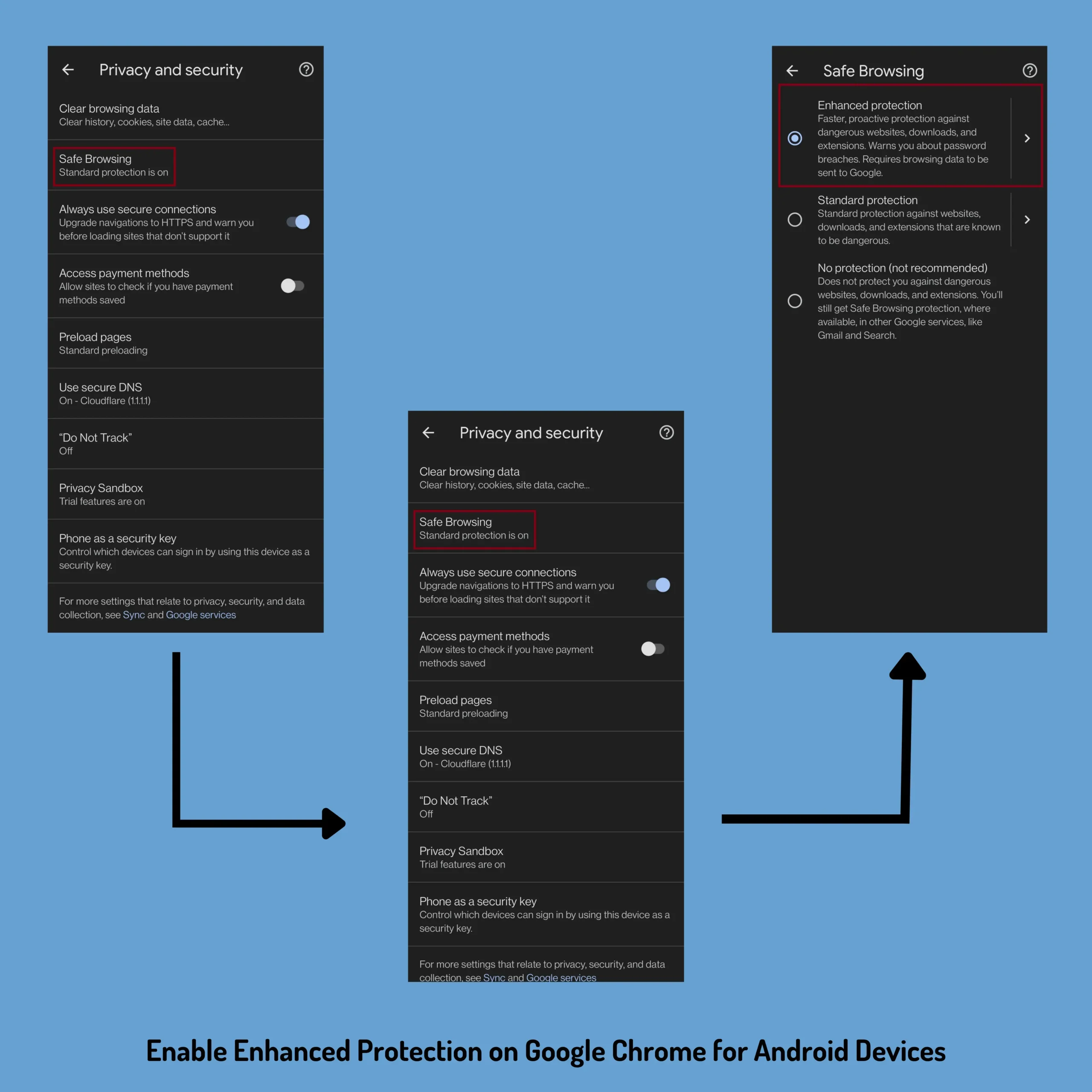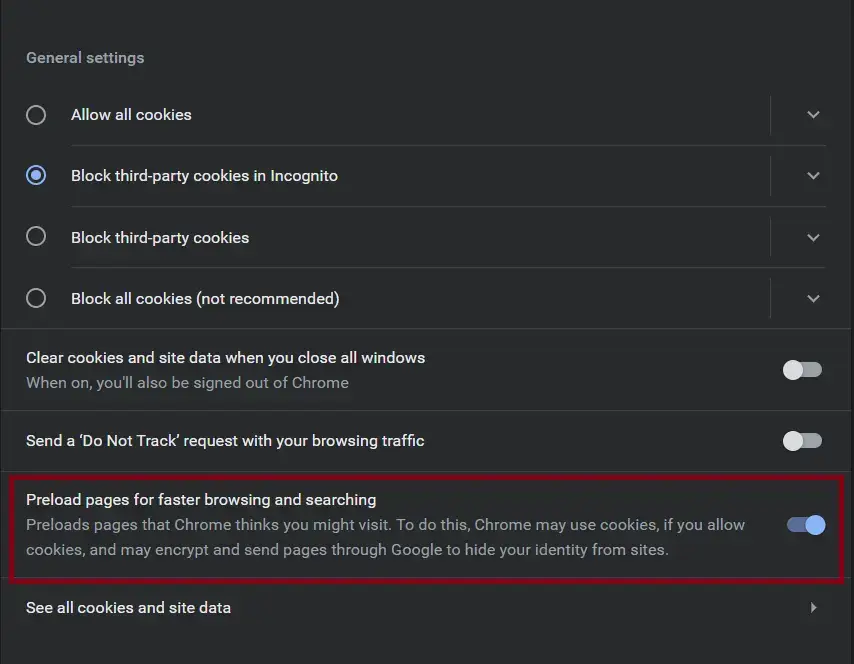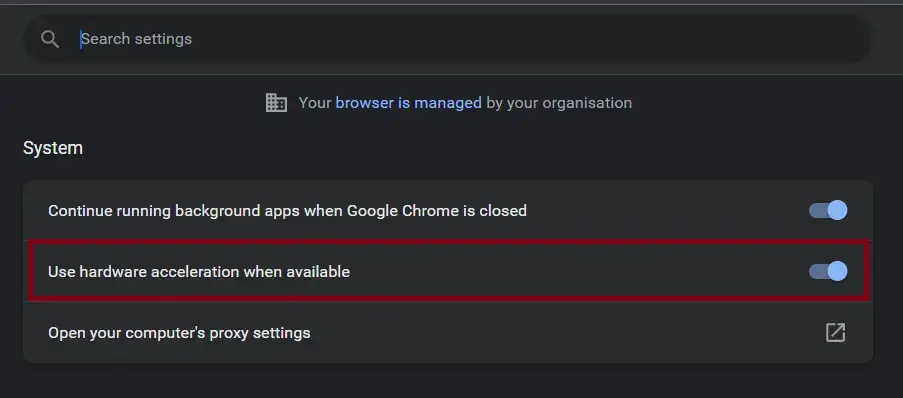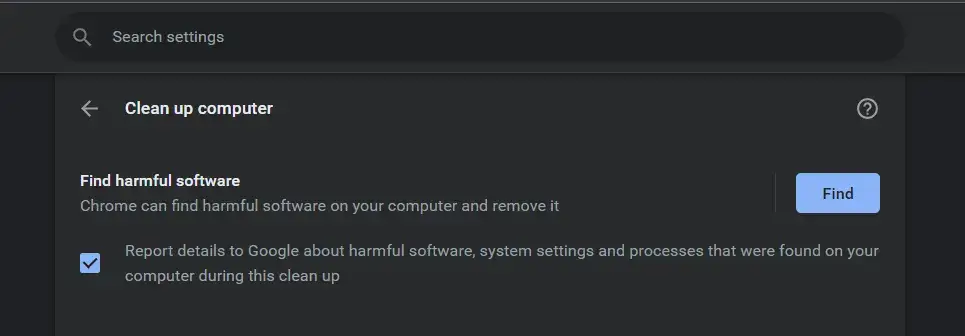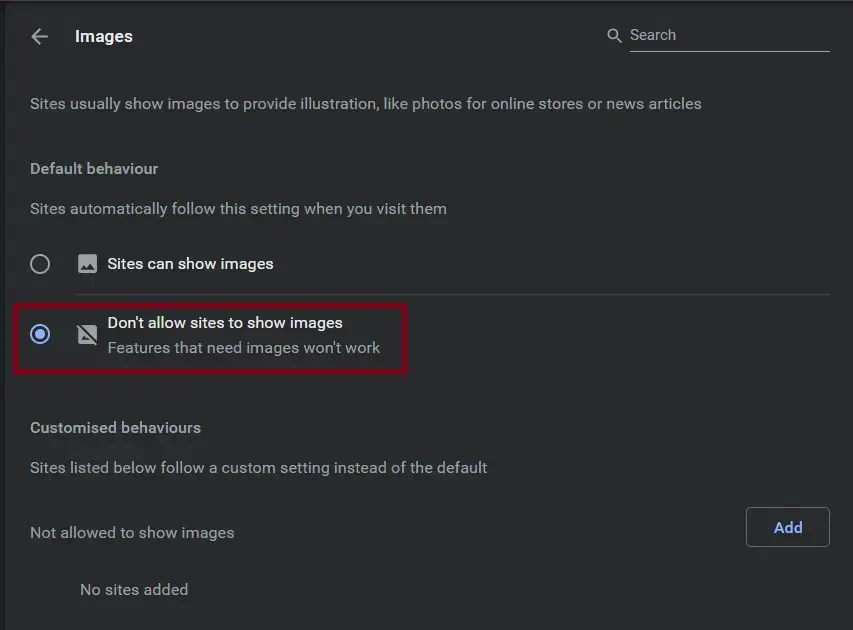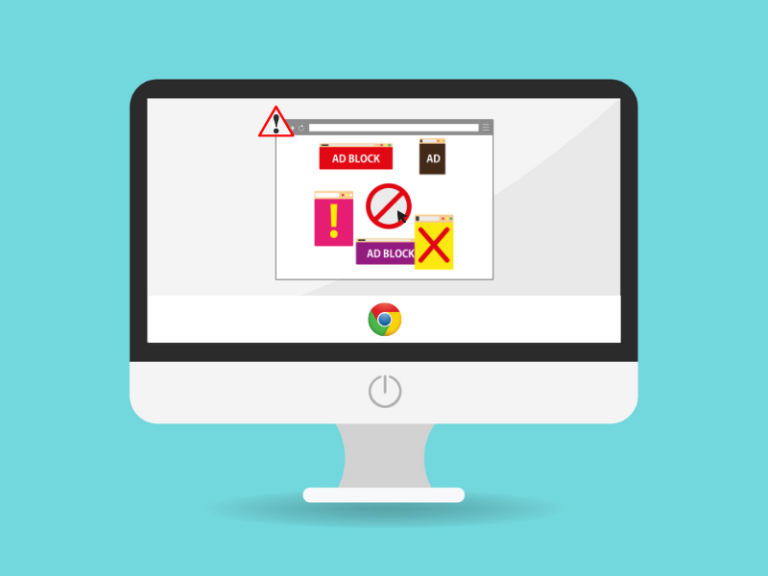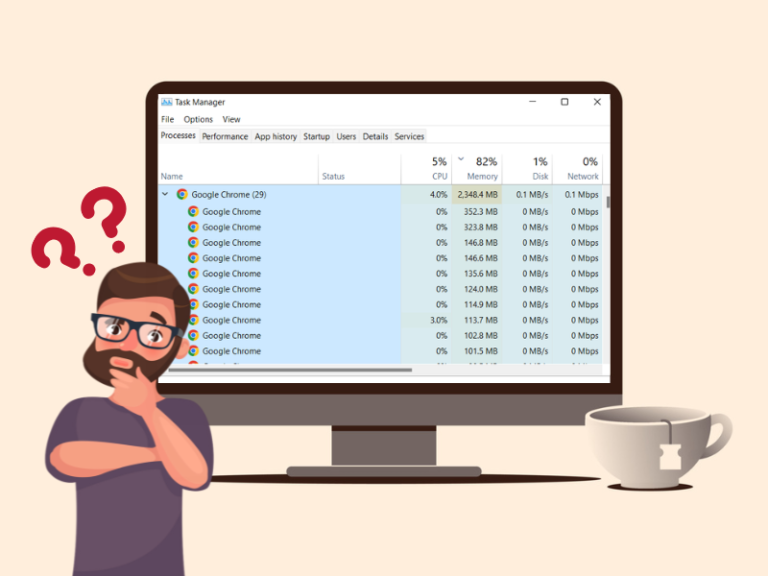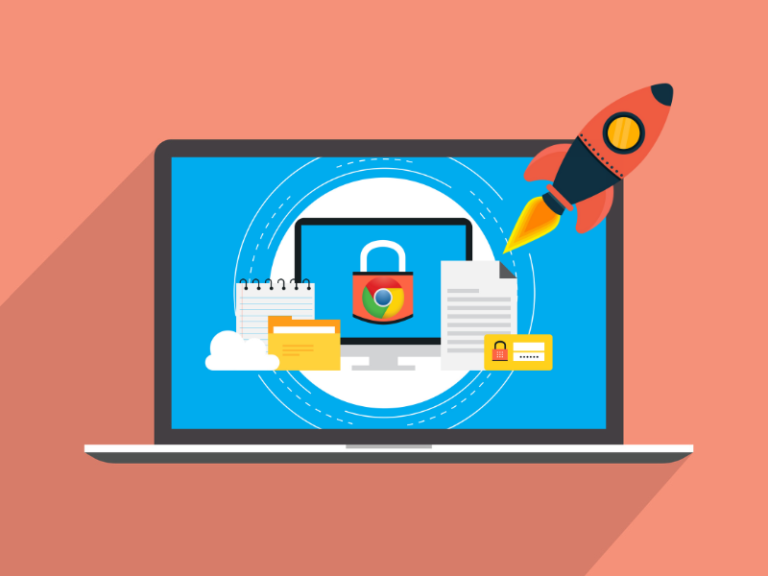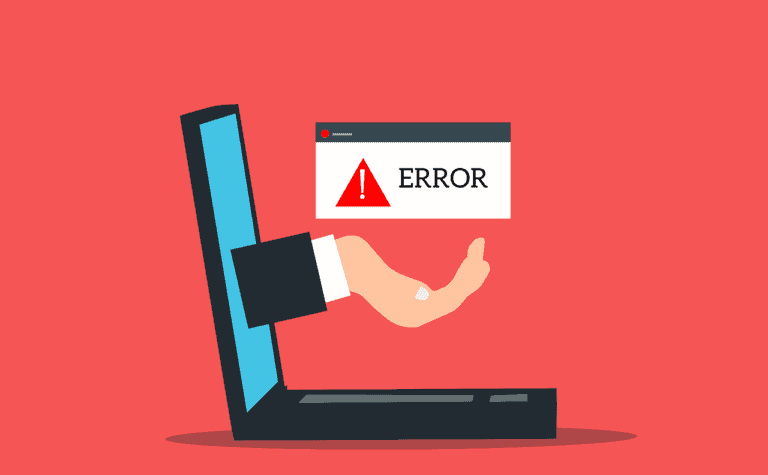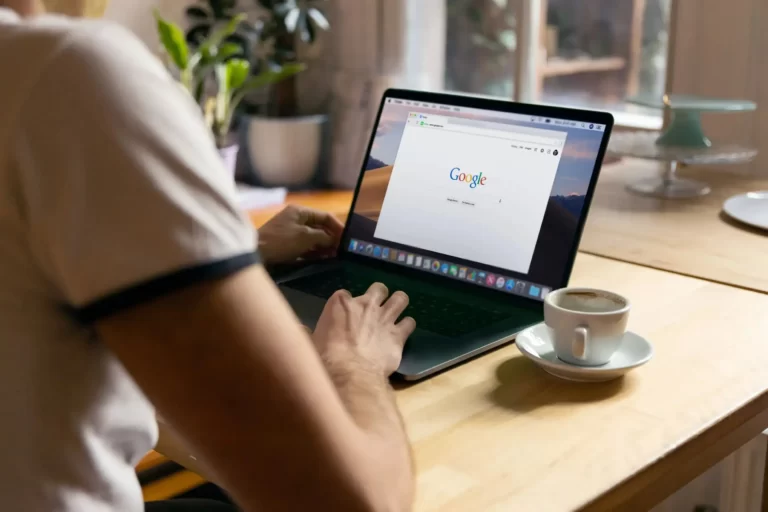There is no doubt that Google Chrome is one of the best browsers available on the internet. Whenever someone asks us to recommend a web browser, we always recommend Google Chrome. But some users complain that after using Chrome for sometime, it has become slower than usual.
After investigating the issue we have come across sixteen ways that can be implemented to speed up Google Chrome significantly. First eight out of sixteen fixes are applicable for both Android & Windows Devices and last eight fixes are for Windows.
1. Clear Browsing Data
A general solution for all the Chrome issues is to clear the browsing data. You can consider this as your first step towards making Chrome faster.
Chrome Browser is used on a daily basis for opening a number of websites. To provide users a better web experience and for ease of use, Chrome stores required browsing data in different formats such as Cookies, Cache, Browsing History etc. But sometimes these browsing data bulk up and impact the speed of the web browser. So clearing browsing data can sometimes speed up the browser.
Follow the steps below to clear browsing data of Chrome on Windows Devices:
- Type chrome://settings/privacy in the address bar and hit enter.
- Go to Clear Browsing Data.
- Choose the time span from the dropdown (Recommended using All Time).
- Check mark all the boxes and click on Clear Data.
Follow the steps below to clear browsing data of Chrome on Android Devices:
- Open Google Chrome and Navigate to Settings from the Three Dots.
- Go to Privacy and security.
- Then go to Clear browsing data.
- Check mark all the boxes and choose the required time span from the drop down (Recommended using All Time).
- Lastly tap on Clear data. All chrome’s browsing data will be deleted for the selected time span.
2. Restore Chrome to Default Settings
Restoring Chrome to its default settings is another general solution for any issues related to Chrome. Try it out and see if it can make Chrome Faster.
For Windows Devices open Google Chrome and go to chrome://settings/reset from the address bar. After that click on Restore Settings to their original defaults. Then click on Reset Settings.
For Android Devices there is no direct option to restore Chrome Settings to its default value. You need to clear all the data and restore default settings together from your device’s settings. For that open Settings and navigate to Apps & Notifications > All Apps > Chrome > Storage & cache > Clear storage and lastly tap on CLEAR ALL DATA.
Depending upon the UI these options can be changed. You can google with your device name to find the process to restore Chrome to its default settings.
3. Manage Tabs Properly
Proper Tab Management can significantly increase your browser speed. Each tab consumes some amount of system resources which can reduce Chrome’s performance. It is advisable to keep open the tabs that you actually need and close the rest.
If you are a windows user you may consider using a Tab Management Extension. These extensions can give you the ability to save multiple tabs and open them according to your need. There are a lot of good Tab Management Chrome Extensions available but Workona is our personal favourite. You may check the video below to know more about Workona.
4. Update Chrome to Its Latest Version
Google pushes several updates to its Chrome Browser. These updates help to fix bugs and also to fix several security issues. If Chrome Browser suddenly becomes slower than usual then you should update it to its latest version. If the problem is from Google’s side then there is a good chance that updating to the latest version can solve the issue and increase the browser’s speed.
To update your Chrome browser to its latest version for Windows and Android Devices you may follow this link.
5. Switch to a Better DNS Provider
DNS providers play a key role to make chrome faster. A fast DNS provider can minimize the data transmission time between the server and your device which can result in a faster load time for the web pages. If you want to know DNS in detail you may refer to this article from Cloudflare.
By default your DNS will be set by your ISP and most likely it won’t be fast enough. However Google Chrome gives us the privilege to customize the DNS provider. You can do some trial and error with the DNS settings and then choose the DNS provider that works best for you. Google and Cloudflare are our two favourite DNS providers. You can use any of these or can also use anything of your choice.
Follow the steps below to change the DNS provider on Google Chrome for Windows Devices:
- Open Google Chrome.
- Type chrome://settings/security in the address bar and hit enter.
- Scroll down and toggle on Use Secure DNS.
- From the drop down choose between Google (Public DNS) or Cloudflare. (If you want to use a different DNS provider then choose Custom and enter a DNS address.)
- And you are done. Restart the browser and you will find that websites are now loading faster than earlier.
Follow the steps below to change the DNS provider on Google Chrome for Android Devices:
- Open Google Chrome and navigate to Settings > Privacy & Security > Use secure DNS.
- Toggle on Choose another provider.
- From the drop down choose Google or Cloudflare. You can also use the custom option for using another DNS Provider.
- Restart the browser and you are done.
6. Block Certain Ads from Chrome’s Settings
Some websites can send pop up ads or can even redirect to a website that most probably you do not want to visit. Some websites can also display Ads that are intrusive and misleading. Whatever the case is, It can slow down Google Chrome. But thankfully Chrome has in-built options to block such types of ads and redirects.
For Windows Devices follow the steps below:
- Open Google Chrome and go to chrome://settings/content by using the address bar.
- Scroll down and navigate to Pop-ups and redirects. (You can find the option under the Content section.)
- Opt for for the option “Don’t allow sites to show pop-ups or use redirects”.
- Go back and scroll down further and under Additional content Settings, you will find an option “Ads”.
- Click on it and opt for “Block ads on site that show intrusive or misleading ads”.
For Android Devices follow the steps below:
- Open Google Chrome and navigate to Three Dots > Settings > Site Settings.
- Scroll down and tap on “Pop-ups and redirects” then toggle it on.
- Go back and tap on “Ads”.
- Toggle it on to block intrusive ads and redirects.
As there is no support for extensions on Chrome Android, opting for these two options are a must for Android Devices.
7. Opt for Enhanced Protection
Malicious websites can infect your device with malwares and slow down Google Chrome significantly. But it can be difficult for users to understand whether a website is malicious or not. Google Chrome’s in-built Enhanced Protection feature enables Chrome to predict and warns you about the dangerous events that may happen.
For Windows devices open Chrome and go to chrome://settings/security then under Safe Browsing click on the radio button beside Enhanced Protection.
For Android Devices open Google Chrome and navigate to Three Dots > Settings > Privacy and security > Safe Browsing. Then tap on the radio button beside Enhanced protection.
8. Use Chrome Flags
Chrome Flags are a very powerful experimental feature of Chrome Browser that can help to increase the browser’s speed. You can access Chrome Flags on both Windows & Android by opening the browser and then going to chrome://flags from the address bar. If you want to know Chrome Flags in detail you can refer to this article.
You can also check out the 8 best Chrome Flags that can boost Chrome’s speed. However, please keep in mind that Chrome adds and removes flags from time to time. So if you are reading the above mentioned article after a year from now, you might not find all the flags that have been mentioned there.
So the best way would be to read the flags description properly and then try and test out which one works the best for your device. And do not worry even if you messed up with flags you can check out our above mentioned article to fix all the issues.
We have already discussed the eight fixes that can be applicable for both Android & Windows. Now let’s discuss the remaining eight fixes that can be applicable for any Windows Device.
9. Manage Extensions Properly
Extensions are an integral part of Google Chrome. It increases the functionality of the browser significantly. However, no need to say that these extensions also consume system resources. Hence, adding more extensions can mess up Chrome’s performance.
We always advise you to keep the extensions that you actually use and disable or remove the rest. This will save up some system resources and speed up Google Chrome.
In addition, you can also manage your extensions such a way that they will only trigger on some specific webpages. Both the processes can offer you a noticeable change in Chrome’s performance.
We have a detailed article on “Can Extensions Slow Down Google Chrome?”. Check it out to know the steps to remove or disable any extensions or the setup process for any Extensions to trigger on specific web pages.
Furthermore, in this article we have also provided some practical data that shows how extensions impact Chrome’s Performance.
10. Use an Ad Blocker Extension
These days web pages are full of advertisements. Whenever Chrome tries to load a webpage it needs to download the ads separately from the server and then display them on the user’s screen.
This whole process can sometimes make the browser sluggish and can provide a bad user experience. Using an Ad Blocker can solve this issue.
To add an Ad Blocking Extension to Google Chrome, go to the Chrome Web Store and search for the Ad Blocking extensions you are looking for. Then click on it and then click on Add to chrome. Grant the necessary permissions and the Ad Blocking Extension will be added.
If you want to know our recommendations for the best Ad Blockers, you can check this article.
11. Opt for Preload Pages
Depending on your web activity, There is an option in Chrome settings that enables Chrome to use cookies and predict the pages that you are going to open and also render the pages beforehand. So in future when you try to open that page, it loads instantly from the cache. This process can help you load web pages quicker.
However, please keep in mind that the preloading process also consumes system resources. So if you have a budget device where you are even having trouble navigating inside Chrome, then we suggest turning this off. There is no point to increase the page loading speed when your device is troubling with the basic Chrome navigation.
To modify Page Preload settings open Google Chrome on a windows device and go to chrome://settings/cookies from the address bar. Then scroll down and you will find an option called “Preload pages for faster browsing and searching” Toggle it On or Off according to your need.
There is also another catch: with this option enabled you can not use an Ad Blocking Extension. Try and test the both and then choose the one that works the best for your device.
12. Use Hardware Acceleration
If your device has a GPU then you can opt for Hardware Acceleration. This option enables Chrome to use CPU and GPU side by side for the processing. This way the load on the CPU gets reduced which helps Chrome to become faster.
To enable the option open Google Chrome and go to chrome://settings/system. Then toggle on “Use hardware acceleration when available”.
13. Scan for Malwares
If your Chrome suddenly gets slower than usual then there is a chance that your device is affected by Viruses or Malwares. Malwares not only can impact on the performance of the Chrome Browser but also can reduce the download speed. It is advisable to scan your device for malwares if your browser becomes sluggish.
For Windows Devices there are two ways to scan for viruses for Chrome Browser. You can use Chrome’s in-built virus scanner or you can try out any popular third party Antiviruses.
To use Chrome’s in-built virus scanner on a Windows Device, open Google Chrome and type chrome://settings/cleanup in the address bar. And then just click on find, if any virus or malware is detected Chrome will show a list of it and then remove it from your device.
After running a scan using Chrome’s in-built scanner we also recommend scanning using a third party antivirus. Some modern day viruses are smart enough to slip through Chrome’s virus scanner. You can use any popular Third Party antivirus; however we recommend using Malwarebytes.
14. Block Videos from Auto playing
When we browse through any web pages we have seen that the embedded videos started to play automatically. Auto playing videos can sometimes make Chrome a bit slower. And moreover it’s not necessarily that we are going to watch all the videos that are embedded on the webpages. So blocking videos from auto playing is a good option to have.
There is no direct setting to block the videos from auto playing, We need to rely on extensions for this functionality. Try out the AutoplayStopper chrome extension and check the differences.
Chrome Android does not have an option to add extensions. So, blocking Videos from auto playing is not available for Android Devices.
15. Use Web Boost Extension
Web Boost is a free and open source browser extension. It can boost the time required to load a webpage by using smart caching techniques. You can definitely give it a try and check how it impacts on chrome performance.
16. Turn off Images for Websites
Lastly, if you are that desperate to speed up Google Chrome even by compromising user experience then you can turn off the images from loading. This will stop Chrome from rendering the images and can load the websites faster.
For Windows devices open Google Chrome and go to chrome://settings/content/images from the address bar and opt for “Don’t allow sites to show images”.
The Conclusion
Google Chrome is one the best modern day browsers, still if you find the browser is slowing down then you can use the above mentioned fixes. It’s not likely that you need to apply all sixteen fixes, each step will help to make Google Chrome faster than before but you can stop at any point when you feel that your browser has become fast enough.
We hope this article will solve your issue, and even after implementing all the fixes if still the issue persists, then you may reinstall Google Chrome and see the changes.
Device configuration can also affect Chrome’s performance, if you are using a budget device with low system resources and any of the above mentioned fixes able to solve the issue then you can switch to another memory friendly browser or you may consider upgrading your device.

